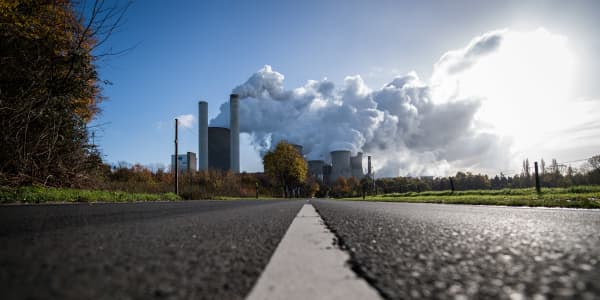A building site for a major infrastructure project in the U.K. has started to use a zero-emission hydrogen fuel cell for heat and power, removing the need for diesel generators.
The news comes as low- or zero-emission kit on construction sites around the world starts to become more commonplace as technologies develop and attitudes shift.
On Thursday, Siemens Energy said the hydrogen fuel cell system would be used on a site in the county of Lincolnshire, England, which serves the Viking Link Interconnector project.
The site was not due to be connected to the grid "for at least six to eight months," the company said, and so required an off-grid system. The new technology "provide(s) enough heat and power for the construction village during that time, removing the need for diesel generators."
Installed in August 2020 by Siemens Energy, the system's kit is contained in a shipping container. Reusable pipes have been installed to carry hot water from the module to areas of the site where it's needed, while a battery storage system is also in place to help boost efficiency and "smooth the peaks in power demand."
The plan is for the fuel cell to eventually use "green hydrogen," a term that refers to hydrogen produced from renewable sources. Siemens Energy added that the fuel cell's sole by-product from producing power from hydrogen was water, which would prevent the emission of nitrogen oxides (NOx) and other particulates.
"Diesel generation is a major contributor to highly damaging CO2, NOx, particulate, and water course pollution," Andrew Cunningham, GeoPura's managing director, said in a statement Thursday. GeoPura is a partner of Siemens Energy and was involved in the project's development.
"This project shows that zero emission power generation has reached a point where it can viably replace off grid diesel generation and remove these health risks to the benefit of all."
The Viking Link Interconnector project is a subsea, high-voltage direct-current link between Denmark and the U.K. that will be 765 kilometers long once completed.
The 2 billion euro (around $2.36 billion) scheme, which will enable the two countries to share clean energy, is a joint venture between National Grid Ventures and Denmark's Energinet. It is due to be finished in 2023.
Other examples of more environmentally friendly kit on building sites include electric construction equipment trialed on a multi-billion dollar high-speed rail project in the U.K.
In July, the HS2 project, which plans to reduce travel times between London and other major cities such as Birmingham and Manchester, said the equipment, called a telehandler, had been used on a section of the development in the U.K. capital.
In the same month, JCB, a major player in the construction sector, said it had developed an excavator "powered by a hydrogen fuel cell." Weighing 20 metric tons, the company said the vehicle had been tested for over 12 months, adding that the "only emission from the exhaust is water."
Last year, JCB said it had started full production of what it described as "the industry's first fully electric mini excavator." According to the business, its 19C-1E digger is quieter than diesel diggers and has zero emissions.




